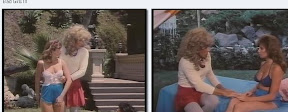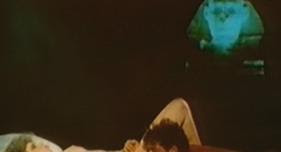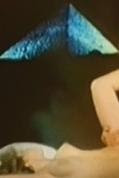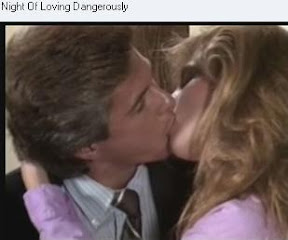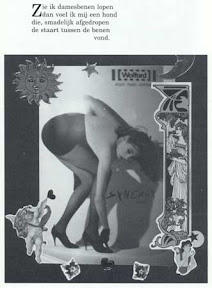Woodstock
Still Rocks at 40By Tom Turco, Newseum Web director
Forty years ago in the upstate New York town of Bethel, about half a million people gathered for three days of peace, love and music at the Woodstock Music and Art Fair. And everything was groovy, baby.Bethel is located about 50 miles from the hamlet named Woodstock where the concert originally was to be held. When the agreement to hold the gathering in Woodstock fell through, Michael Lang, one of the concert’s co-creators, cut an impromptu deal with dairy-farm owner Max Yasgur for the large swath of land nestled in the Catskill Mountains. The organizers decided to stick with the Woodstock name.
It turned out to be quite a show. Little did the organizers know that they would attract more than twice the expected crowd, that the infrastructure would be insufficient to handle it, and that the concert would turn into a free event that lasted for several days.
Nearly half a century later, Woodstock has achieved a mythical stature that many musical gatherings have tried to re-create but have been unable to truly achieve. Woodstock tapped the zeitgeist in a unique way, and the ensuing legend has taken on a life of its own.
Woodstock was the embodiment of the counterculture movement, and is one of the "50 Moments That Changed the History of Rock & Roll," according to Rolling Stone magazine. At its core were the music and the fans. A dazzling array of legendary bands were showcased, including Jimi Hendrix, Santana, The Who, the Grateful Dead, The Band, Creedence Clearwater Revival, Janis Joplin, Crosby, Stills, Nash & Young, Richie Havens, John Sebastian, Sly & the Family Stone, Jefferson Airplane and Joe Cocker.
"It was unpredictable, spontaneous and organic," says USA Today rock music critic Edna Gundersen. "Music was the siren call to all of these young people. They took care of themselves, focused on the music and did so with joy and optimism. Against all odds, it succeeded as a magical event of peace and love and free expression."
It also was a turning point for music journalism, particularly for rock music. What had previously been relegated to underground publications or buried as a random curiosity in the dailies was now vaulted into the mainstream. The youth movement, rock music and all that went along with them were now front and center, demanding to be heard. Coverage of this demographic became not only a legitimate beat but also a smart market to cultivate.
The mostly local media coverage of Woodstock focused largely on the traffic, nudity, drugs, rain, mud and the hippy subculture. Former New York Times reporter Barnard Collier covered the event, despite his editors’ misgivings about the story. They wanted Collier to focus on the negatives. But he resisted, stood his ground and gained the support of Times top editor, Scotty Reston.
"There were lots of colors and wildly dressed people," he said. "The story just got better and better. The people were beautiful. Yes, there was nudity, but it was natural. It was certainly the best story I have ever done, and I’ve done quite a few. It was all a beautiful accident."
"Woodstock at 40," the Newseum’s newest exhibit,
will be displayed Aug. 1 through Oct. 31, 2009.
New Exhibit Takes Stock of Woodstock
WASHINGTON — Rolling Stone magazine called the Woodstock Music and Art Fair "the most famous event in rock history."
What started as a festival of music, peace and love in August 1969 became a mammoth gathering "half a million strong," as Joni Mitchell later sang.
But Woodstock was more than that. It marked a moment when the news media first recognized music and entertainment as a cultural and commercial force.
The Newseum’s new exhibit, "Woodstock at 40: The Rise of Music Journalism," opens Aug. 1, 2009, and features rarely seen photographs and artifacts from the historic music event. Included are the images and stories of photographers Dan Garson, Henry Diltz and Mark Goff, along with an original Woodstock press pass, press kit and festival tickets; an authentic Woodstock poster from concert promoter Michael Lang’s personal collection; and the original working list of musicians and how much they were paid.
Woodstock’s impact on the press will also be explored in "Woodstock" — a Newseum-produced video featuring rare archival footage and musical performances — that will be shown on the 90-foot video wall in the Robert H. and Clarice Smith Big Screen Theater. USA Today’s Edna Gundersen, Barnard Collier of The New York Times and Jan Hodenfield of Rolling Stone explain the enduring effect Woodstock had on music reporting.
Photographs taken by Garson — a teenager who obtained a coveted press pass to cover Woodstock for his high school newspaper — are being exhibited for the first time, along with his camera and reporter’s notes.
"The people were something else," Garson wrote about Woodstock. "Everyone was friendly and mostly cheerful, whether fully clothed or not." Garson died of cancer in 1992.
Diltz, the official Woodstock photographer, was a rising music photographer in Los Angeles when Woodstock promoter Michael Lang sent him a plane ticket and $500 to document the music festival. After Jimi Hendrix’s festival-ending performance, Diltz headed to Life magazine’s New York offices, where editors were planning a special issue on Woodstock. Life gave three of his photographs — of singers Grace Slick, David Crosby and Sly Stone — full-page treatment. Diltz went on to make a career photographing rock ‘n’ roll.
Goff covered Woodstock as a young reporter for Kaleidoscope, a Milwaukee-based alternative newspaper. From a small press pit just below the stage, Goff snapped close-up photos of musicians, including Joan Baez, Ravi Shankar and Sly Stone. His favorite memory of Woodstock is the spirit of the crowd.
"It really was peace, love and music," Goff said. "People were dancing in the rain and dancing in the mud."
Special Event: A live band, Woodstock ReCovered, will play some of the memorable songs from the historic rock festival at the Newseum this Saturday, August 1, to celebrate the opening of the new exhibit "Woodstock at 40: The Rise of Music Journalism." More >
This exhibit was made possible through the generous cooperation of Rona Elliot and Genesis Publications, publisher of "Woodstock Experience," along with Woodstock executive producer Michael Lang, Brad LeMee and the family of Dan Garson, and Henry Diltz and Mark Goff.

Walter Cronkite talks to a packed audience at the Newseum in 1997. (Newseum collection)
Remembering
Walter CronkiteBy Sharon Shahid, senior Web editor
CBS News legend Walter Cronkite, once called
"the most trusted man in America," died Friday, July 17. He was 92.
In an age when a growing number of viewers now turn to comedy TV shows for "fake" news, Cronkite — "Uncle Walter" to his loyal fans — was the real deal.
He was born on Nov. 4, 1916, in St. Joseph, Mo., and raised in Houston, Texas. His interest in journalism began in high school, where he worked for the school newspaper. He started his journalism career as a nonpaid campus correspondent for The Houston Post. Later, working for United Press, he was among the more than 1,600 U.S. journalists who covered World War II from start to finish.In 1950, Cronkite was hired by CBS News. In 1962, he became anchor of the "CBS Evening News." The following year, the program, renamed the "CBS Evening News With Walter Cronkite, was expanded from 15 minutes to 30 minutes. Using his signature sign-off — "And that’s the way it is" — Cronkite shepherded the nation through nearly every significant news event of our time.
When President John F. Kennedy was assassinated in 1963, it was Cronkite’s emotional announcement of the president’s death that became television’s lasting image of the tragedy.
After visiting Southeast Asia in 1968 to learn firsthand what was going on in the increasingly unpopular war in Vietnam, he later declared in a rare editorial that the United States should negotiate a way out of the war. President Lyndon B. Johnson understood the impact of Cronkite’s views.
"If I’ve lost Cronkite, I’ve lost Middle America," he said.
Said Cronkite: "It was time for me to cash in on all this trust people say they have for me."
When Neil Armstrong became the first human to step on the moon, Cronkite giddily declared on air: "There’s a foot on the moon. … Look at those pictures. Wow!"
Cronkite retired from CBS in 1981. Perhaps expressing the sentiments of millions of TV viewers at the time, a T-shirt worn by a fan in Los Angeles exclaimed, "Oh my God, what are we going to do without Walter Cronkite?"
Cronkite was a frequent participant in Newseum programs. His contributions to journalism are explored in these Newseum galleries:
- • A special video of Cronkite is featured on the giant screen in the New York Times–Ochs-Sulzberger Family Great Hall of News.
- • The News Corporation News History Gallery features exhibits on Cronkite’s life and career.
- • The Bloomberg Internet, TV and Radio Gallery offers video excerpts of Cronkite’s coverage of the space race, President John F. Kennedy’s assassination and the historic Apollo 11 moon landing.
Related Video:
Apollo 11 commander Neil Armstrong descends for first steps on moon.
NASA Releases Restored Apollo 11 Video at the Newseum
Watch Video:
- • Apollo 11 commander Neil Armstrong descends for first steps on moon.
- • Lunar module pilot Buzz Aldrin takes his first lunar steps.
- • Armstrong reads the plaque that was left on the moon.
- • The astronauts raise the American flag on the moon.
By Sharon Shahid, senior Web editor
WASHINGTON — To mark the 40th anniversary of Apollo 11’s historic walk on the moon, NASA released newly restored video of the historic feat at a press conference July 16 at the Newseum.
Four scenes — of Apollo 11 commander Neil Armstrong descending the lunar module to take the first steps on the moon; lunar module pilot Buzz Aldrin taking his first lunar steps; Armstrong reading the plaque left on the moon; and the astronauts raising the flag on the moon — showed the comparison of the original grainy images and the new improved versions.
After an extensive three-year global search for the original footage — a search that included Stan Lebar, one of the designers of the camera used to record the images on the moon — NASA discovered that the tapes had most likely been permanently erased and recycled to record other data.
The restored images were culled from a variety of sources, including CBS News Archives, tapes recorded from NASA facilities in Sydney, Australia, and NASA kinescopes that had not been viewed for 36 years.
Richard Nafzger, a NASA engineer who oversaw TV processing at the ground tracking sites during Apollo 11, said the new images were a partial restoration and were the digital enhancement of the best available TV footage from July 1969. The final results will be released in September.
Lowry Digital, a Burbank, Calif., company that has restored more than 400 classic films, including "Casablanca" and "Star Wars," was contracted by NASA to restore the footage. The company has a history with NASA — its founder, John Lowry, invented technology called "video noise reduction" that was applied to the Apollo 16 and 17 missions.
Mike Inchalik, Lowry’s president, called the enhancement project "a bit of closure for us." Inchalik said the technology used to enhance the footage "puts quality of the image first."
Inchalik and Nafzger dismissed concerns that Lowry’s Hollywood connection would fuel conspiracy theories.
"We’re a restoration house," Inchalik said. "We’re very careful in what we fix and what not to fix. We’re being extremely cautious."
Nafzger emphasized that the restored video were of images already viewed by the public and praised Lowry’s past relationship with NASA.
"This company is restoring historic video. There couldn’t be a more perfect match," he said.
Please check out more great content and details for Newseum's Apollo Family Weekend.
For more information on the restoration scenes, visit www.nasa.gov.
